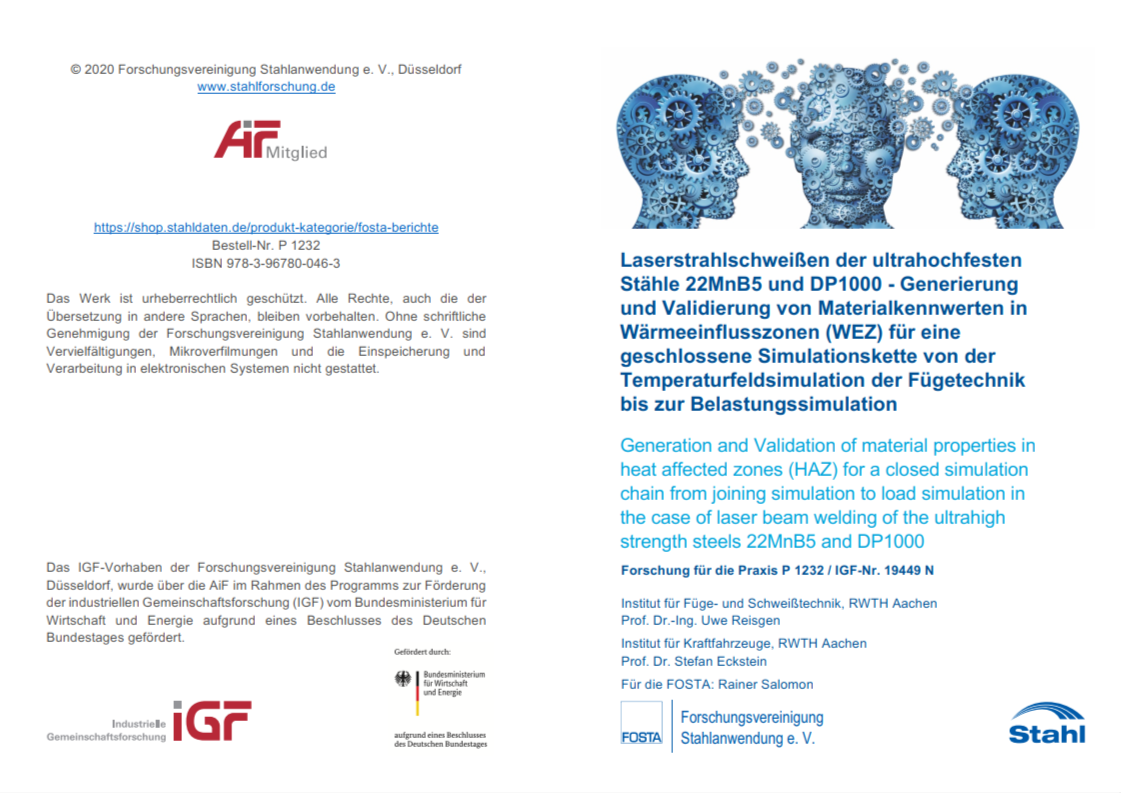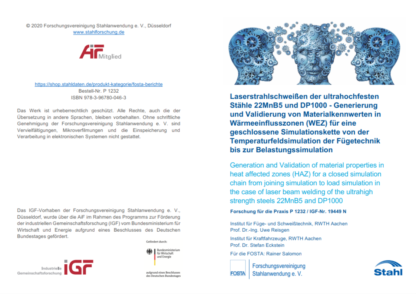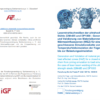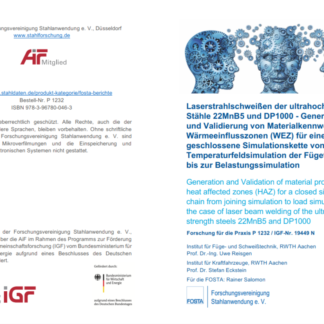Description
P 1232 – Generation and Validation of material properties in heat affected zones (HAZ) for a closed simulation chain from joining simulation to load simulation in the case of laser beam welding of the ultrahigh strength steels 22MnB5 and DP1000
The research projects purpose is to make a closed simulation chain from joining simulation to load simulation in the case of ultrahigh strength steels (UHSS) possible. Therefore, a deeper understanding of process linked temperature profiles which change the material properties in heat affected zones (HAZ) will be gained and transferred into simulation approaches. To achieve that goal, temperature profiles similar to those occurring in the different areas of a laser weld seam HAZ will be reproduced in material specimens. Mechanicaltechnological properties will be determined for those areas and implemented in a finite element model (FEM) for load simulations. This approach will be used to simulate tensile tests and later, in a simplified version, for a complete vehicle crash simulation with an example for a component concept.
Aspired results are the correlation of heating velocity and transition temperature as well as the determination of their influence on the microstructure formation, the generation of temperature profile depending mechanical-technological properties in the HAZ of a laser weld seam and the determination of the necessary level of detail for the joining zone in the FEM-model to further improve the crash simulation results. The outputs can be implemented into an FEM-model in short term. This allows simulation service providers to spread their field of experience. For manufacturers and processors of UHSS parts the possibility to predict a parts behaviour under load allows further lightweight potential and reduction of costs for experiments and prototypes.
Furthermore, it is possible for materials science companies to adapt a method to generate material properties which opens up a further field of experience.
Published in:
2020
Authors:
Prof. Dr.-Ing. U. Reisgen, Prof. Dr. St. Eckstein




